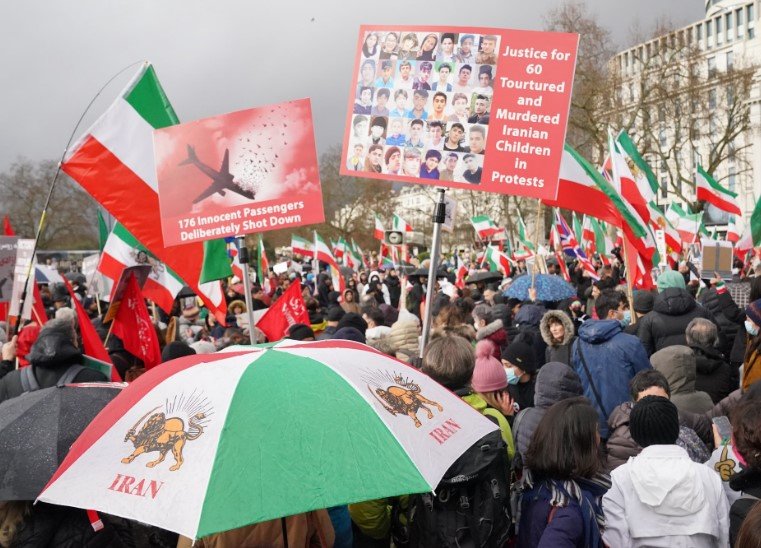A short but jarring interruption on Iranian television has triggered a firestorm of accusations, with Tehran blaming Israel for hacking the satellite feed and airing protest footage from the 2022 uprising.
Iranian state television was briefly hijacked on Tuesday night in what officials are calling a “Zionist cyberattack,” reigniting tension inside the country and drawing attention abroad. Viewers across the Islamic Republic were suddenly shown old footage of women burning hijabs and chanting anti-regime slogans, with a message calling on citizens to “rise up.”
The broadcast, which lasted just seconds, was enough to cause a media frenzy. Within minutes, Iranian authorities issued statements warning of foreign sabotage. And it didn’t take long for Israel’s name to be invoked.
Protest Flashback Cuts Into Regular Programming
The disruption came with little warning. Around 10:47 p.m. local time, state TV viewers in several provinces — including Tehran, Mashhad and Isfahan — reported their screens flashing black before showing a grainy video montage.
One clip, captured by social media users and shared widely on Telegram and X, showed protest chants from 2022, during the height of the Mahsa Amini demonstrations.
And then, it was gone.
Iran’s state broadcaster IRIB quickly confirmed the breach and issued a scrolling warning on-screen blaming what it called “the Zionist enemy” for disrupting satellite service.

Officials Scramble to Regain Narrative Control
Hamshahri, a semi-official Tehran daily, posted a now-deleted message on Telegram saying hackers had “broadcast a call asking people to take to the streets.”
Later, IRIB’s own anchors echoed government lines, calling the footage fake and “a psychological operation” aimed at destabilizing public trust.
Iranian security services have since launched an investigation into how the signal was intercepted — although many inside the country have already made up their minds. The phrase “Israel hacked our airwaves” trended on Persian-language platforms into the early hours of Wednesday.
Not the First, Probably Not the Last
This isn’t new territory. Iran’s state television has been hacked before, most recently in 2022 when an anonymous group interrupted programming with images of Ayatollah Ali Khamenei crossed out in red.
But this time feels different, analysts say. The context has shifted dramatically.
Tensions are at a boiling point. Israel’s Operation Rising Lion against Iran continues into its second week. The U.S. military build-up in the region has added a whole new layer of suspense. And Tehran is struggling to contain internal unrest and spiraling inflation.
So yeah — the timing couldn’t be worse.
-
The 2022 Mahsa Amini protests led to nearly 500 civilian deaths, per human rights groups.
-
The regime has faced waves of cyberattacks in recent years, many attributed to foreign intelligence agencies.
-
Israeli cyberunits, including Unit 8200, have been widely suspected in operations targeting Iran’s infrastructure, banking systems, and nuclear facilities.
State Media on Edge
Since Tuesday night, IRIB has gone into damage control mode. According to insiders speaking anonymously, emergency cybersecurity protocols were triggered within minutes of the breach.
“We are not allowed to air anything live now,” said one IRIB staffer. “Even routine news must be cleared by security.”
That’s a sharp change from how things worked even a few months ago. Many believe this clampdown reflects just how rattled the establishment is.
One former IRIB journalist who fled to Germany in 2023 described the mood in Tehran as “nervous” and “paranoid.”
“There’s a war going on in cyberspace,” she said. “They’ve lost control of the narrative. This hack, short as it was, reminded people what they’re fighting for.”
Questions Around Attribution
While Iran is quick to blame Israel — and to be fair, Israel hasn’t denied it — cybersecurity experts are still piecing together how the breach happened.
Some suspect satellite signal spoofing. Others point to internal sabotage. Still others say it could be part of a coordinated campaign from dissident groups abroad, possibly with foreign help.
Here’s what’s known so far:
| Clue | Detail |
|---|---|
| Video Source | 2022 protest footage linked to Mahsa Amini death |
| Method | Unknown — likely signal interception or satellite spoofing |
| Duration | Estimated 10–15 seconds |
| Targets | State TV broadcast across several major cities |
| Government Response | Blames “Zionist enemy,” launches investigation |
A Moment of Flashpoint in a Tense Summer
The broader backdrop here is hard to ignore. This hack wasn’t just a prank or a rogue act of digital mischief — it was political theater, timed for maximum effect.
With war drums beating louder in the Middle East, anything that rattles the internal grip of the Iranian regime can have ripple effects well beyond its borders.
Tourism from the region is already plummeting. Flight paths are being rerouted. The IRGC has put units on heightened alert. And Iranian President Ebrahim Raisi, already under pressure, has reportedly called for new restrictions on internet access — a move likely to escalate protests rather than quiet them.
One sentence, buried in a post by an Iranian X user, summed up the mood: “Even 15 seconds of truth can shake a whole empire.”
A Region Caught Between War, Screens, and Silence
Information warfare is becoming the new front line. It’s quieter than bombs and doesn’t leave a crater — but it echoes in people’s minds longer.
As Tehran’s top brass debated cyber defenses late into the night, young Iranians were sharing screen recordings on private VPNs, whispering in group chats, “Did you see it too?”
That’s the power of a flash — it stays burned into memory long after the light fades.








